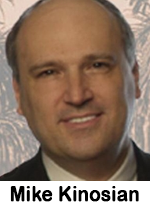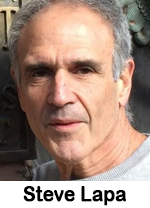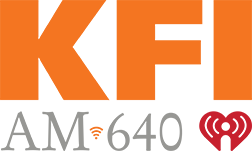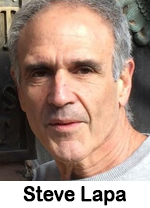 January 2023 PPM Data – Information for the January 2023 ratings period has been released for New York; Los Angeles; Chicago; San Francisco; Dallas; Houston; Atlanta; Philadelphia; Nassau-Suffolk (Long Island); Riverside-San Bernardino-Ontario; San Jose; and Middlesex-Somerset-Union.
January 2023 PPM Data – Information for the January 2023 ratings period has been released for New York; Los Angeles; Chicago; San Francisco; Dallas; Houston; Atlanta; Philadelphia; Nassau-Suffolk (Long Island); Riverside-San Bernardino-Ontario; San Jose; and Middlesex-Somerset-Union.
Nielsen Audio’s January 2023 sweep covered January 5 – February 1.
TALKERS magazine managing editor Mike Kinosian provides “Takeaways” for spoken-word stations finishing in their respective markets’ top twenty.
Cited as well are each particular city’s #1 station (6+) and loftiest (6+) upticks and drop-offs.
All comparisons noted are “Holiday” 2022 – January 2023 (6+).
NEW YORK
News/Talk: Red Apple Media’s WABC-AM & WLIR-FM “77 Talk Radio” 3.1 – 3.9, +.8, tenth to ninth
iHeartMedia-owned WOR “710 – The Voice of New York” 1.1 – 1.7, +.6, #23 to #19
News: Audacy’s WINS-FM “1010 WINS All News 92.3 FM” flat at 4.6, fifth to seventh and co-owned WCBS-AM “News Radio 880” steady at 2.0, remains at #17
Sports Talk: Audacy-owned WFAN-FM & WFAN-AM “Sports Radio 101.9 FM & 66 AM” (Brooklyn Nets and NY Giants) 3.1 – 3.3, +.2, #10 to #12 and WFAN’s internet stream 1.4 – 2.0, +.6, #21 to #17
Public Radio News/Talk: WNYC Broadcasting Foundation’s WNYC-FM 2.8 – 3.8, +1.0, #12 to #10
Number One 6+: iHeartMedia adult contemporary WLTW, third month in a row, 10.4 – 6.5, -3.9
Largest 6+ “Holiday” 2022 – January 2023 Increase: classic hits-oldies WCBS-FM (+1.5)
Largest 6+ “Holiday” 2022 – January 2023 Decrease: adult contemporary WLTW (-3.9)
LOS ANGELES
News/Talk: iHeartMedia’s KFI “AM 640” 4.4 – 4.1, -.3, third to sixth
News: Audacy-owned KNX-FM “News 97.1” 2.5 – 2.8, +.3, #12 to #9
Sports Talk: None in the top twenty
Public Radio News/Talk: Pasadena Area Community College’s KPCC 2.0 – 2.3, +.3, #19 to #16
Number One 6+: iHeartMedia adult contemporary KOST, seventh month in succession, 13.1 – 6.8, -6.3
Largest 6+ “Holiday” 2022 – January 2023 Increase: smooth AC KTWV (+1.3)
Largest 6+ “Holiday” 2022 – January 2023 Decrease: adult contemporary KOST (-6.3)
CHICAGO
News/Talk: Nexstar Media Group’s WGN “Radio 720” (Blackhawks) 2.8 – 3.4, +.6, #12 to #9
News: Audacy-owned WBBM-AM & WCFS “News Radio 780 AM & 105.9 FM” (Bears) 4.8 – 4.5, -.3, continues in fourth-place
Sports Talk: Audacy’s WSCR “670 The Score” (Bulls) 1.7 – 1.9, +.2, #20 to #17
Public Radio News/Talk: Chicago Public Media-owned WBEZ 3.4 – 3.9, +.5, sixth to eighth
Number One 6+: iHeartMedia adult contemporary WLIT, fourth straight month, 14.8 – 7.3, -7.5
Largest 6+ “Holiday” 2022 – January 2023 Increase: triple A WXRT (+3.0)*
Largest 6+ “Holiday” 2022 – January 2023 Decrease: adult contemporary WLIT (-7.5)
*Represents the largest “Holiday” 2022 – January 2023 increase (6+) of any station from these 12 PPM-markets
SAN FRANCISCO
News/Talk: Cumulus Media-owned KSFO “Talk Radio 560” flat at 1.7, #18 to #20
News: Audacy’s KCBS-AM & KFRC “All News 740 AM & 106.9 FM” 6.7 – 6.9, +.2, anchored in the runner-up slot
Sports Talk: Cumulus Media-owned KNBR “The Sports Leader” (49ers) 3.3 – 3.9, +.6, eighth to seventh
Audacy’s KGMZ “95.7 The Game” (Golden State Warriors) 1.9 – 2.7, +.8, #16 to #11
Public Radio News/Talk: KQED, Inc.-owned KQED 5.9 – 6.1, +.2, third to fourth
Number One 6+: Bonneville adult contemporary KOIT-FM, third successive month, 15.5 – 8.1, -7.4
Largest 6+ “Holiday” 2022 – January 2023 Increase: adult contemporary KISQ (+2.1)
Largest 6+ “Holiday” 2022 – January 2023 Decrease: adult contemporary KOIT-FM (-7.4)
DALLAS
News/Talk: Cumulus Media-owned WBAP “News Talk 820 AM & 99.5 HD2 FM” 3.7 – 3.4, -.3, eighth to tenth
News – Talk: Audacy’s KRLD-AM “News Radio 1080” (Cowboys) 2.2 – 2.5, +.3, #20 to #17
Sports Talk: Cumulus Media-owned KTCK “Sports Radio The Ticket” (Stars) 3.8 – 6.2, +2.4, sixth to first
Audacy’s KRLD-FM “105.3 The Fan” (Cowboys) 3.7 – 3.5, -.2, eighth to ninth
Public Radio News/Talk: North Texas Public Broadcasting-owned KERA 2.5 – 3.1, +.6, #16 to #14
Number One 6+: Cumulus Media sports talk KTCK, first month, 3.8 – 6.2, +2.4
Largest 6+ “Holiday” 2022 – January 2023 Increase: sports talk KTCK (+2.4)
Largest 6+ “Holiday” 2022 – January 2023 Decrease: adult contemporary KDGE (-5.2)
HOUSTON
News/Talk: iHeartMedia’s KTRH “AM 740 News Radio” 3.3 – 3.8, +.5, #12 to #11
News: None in the top twenty
Sports Talk: Audacy KILT-AM “Sports Radio 610” 1.7 – 1.9, +.2, #21 to #19
Public Radio News/Talk: University of Houston’s KUHF 2.4 – 3.1, +.7, #18 to #13
Number One 6+: iHeartMedia adult contemporary KODA, 23rd consecutive month, 14.7 – 9.6, -5.1
Largest 6+ “Holiday” 2022 – January 2023 Increase: classic rock KGLK (+1.0)
Largest 6+ “Holiday” 2022 – January 2023 Decrease: adult contemporary KODA (-5.1)
ATLANTA
News/Talk: Cox Media Group-owned WSB-AM & WSBB “Atlanta’s News & Talk” 4.4 – 6.3, +1.9, seventh to fourth
News: None in the top twenty
Sports Talk: Audacy’s WZGC “92.9 The Game” (Hawks and Falcons) 2.2 – 2.4, +.2, #16 to #14
Dickey Broadcasting-owned WCNN “The Fan” 1.4 – 1.7, +.3, #20 to #18
Public Radio News/Talk: Atlanta Public Schools-owned WABE 3.0 – 3.8, +.8, tenth to ninth
Number One 6+: Cox Media Group classic hits-oldies WSRV, first month, 8.0 – 8.3, +.3
Largest 6+ “Holiday” 2022 – January 2023 Increase: news/talk WSB-AM & WSBB (+1.9)
Largest 6+ “Holiday” 2022 – January 2023 Decrease: contemporary Christian WFSH (-2.8)
PHILADELPHIA
News/Talk: None in the top twenty
News: Audacy-owned KYW & WPHI “News Radio 1060 AM & 103.9 FM” 6.2 – 5.8, -.4, third to fifth
Sports Talk: Audacy’s WIP “Sports Radio 94” (Eagles) 5.9 – 6.9, +1.0, fifth to second and WIP’s internet stream 1.2 – 1.6, +.4 #20 to #19
Beasley Media Group-owned WPEN-FM “97.5 The Fanatic” (76ers and Flyers) 1.3 – 1.6, +.3, flat at #19
Public Radio News/Talk: WHYY-owned WHYY 3.6 – 5.0, +1.4, continues in seventh-place
Number One 6+: Beasley Media Group classic rock WMGK, first month, 6.0 – 7.3, +1.3
Largest 6+ “Holiday” 2022 – January 2023 Increase: classic hits-oldies WOGL (+1.9)
Largest 6+ “Holiday” 2022 – January 2023 Decrease: adult contemporary WBEB (-11.0)
LONG ISLAND
News/Talk: iHeartMedia-owned WOR “710 – The Voice of New York” 1.1 – 2.2, +1.1, #21 to #16
News: Audacy’s WCBS-AM “News Radio 880” 3.8 – 4.4, +.6, repeats in seventh-place and cluster-mate WINS-FM “1010 WINS All News 92.3 FM” 3.0 – 3.6, +.6, tenth to eighth
Sports Talk: Audacy-owned WFAN-FM & WFAN-AM “Sports Radio 101.9 FM & 66 AM” (Brooklyn Nets and NY Giants) 4.8 – 5.1, +.3, sixth to fourth and WFAN’s internet stream flat at 1.6, #16 to #17
Good Karma’s WEPN-FM “98.7 ESPN New York” (Knicks, Jets, Rangers, Islanders) 1.4 – 1.6, +.2, #19 to #17
Public Radio News/Talk: None in the top twenty
Number One 6+: iHeartMedia CHR WHTZ, first month, 5.8 – 6.6, +.8
Largest 6+ “Holiday” 2022 – January 2023 Increase: rhythmic CHR WKTU (+1.2)
Largest 6+ “Holiday” 2022 – January 2023 Decrease: hot AC WALK-FM (-5.9)
RIVERSIDE
News/Talk: None in the top twenty
News: None in the top twenty
Sports Talk: None in the top twenty
Public Radio News/Talk: San Bernardino Community College District’s KVCR, flat at .4, #18 to #19
Number One 6+: Anaheim Broadcasting classic hits-oldies KOLA, 14th consecutive month, 7.6 – 6.8, -.8
Largest 6+ “Holiday” 2022 – January 2023 Increase: regional Mexican KRQB (+1.4)
Largest 6+ “Holiday” 2022 – January 2023 Decrease: rhythmic CHR KGGI (-.9)
SAN JOSE
News/Talk: Cumulus Media-owned KSFO “Talk Radio 560” 1.1 – 1.3, +.2, #22 to #19
News: Audacy’s KCBS-AM & KFRC “All News 740 AM & 106.9 FM” 7.0 – 7.4, +.4, anchored in the runner-up slot
Sports Talk: Cumulus Media-owned KNBR “The Sports Leader” (49ers ) 2.9 – 4.3, +1.4, eighth to seventh
Audacy’s KGMZ “95.7 The Game” steady at 1.3, #20 to #19
Public Radio News/Talk: None in the top twenty
Number One 6+: Bonneville adult contemporary KOIT-FM, eighth consecutive month 22.7 – 8.5, -14.2
Largest 6+ “Holiday” 2022 – January 2023 Increase: adult contemporary KISQ (+2.8)
Largest 6+ “Holiday” 2022 – January 2023 Decrease: adult contemporary KOIT-FM (-14.2)**
**Represents the largest “Holiday” 2022 – January 2023 decrease (6+) of any station from these 12 PPM-markets
MIDDLESEX-SOMERSET-UNION
News/Talk: Townsquare Media-owned WKXW “New Jersey 101.5” 6.2 – 7.1, +.9 fourth to second
News: Audacy’s WINS-FM “1010 WINS All News 92.3 FM” 1.7 – 1.9, +.2, repeats at #14 and co-owned WCBS-AM “News Radio 880” 1.2 – 1.1, -.1, #18 to #20
Sports Talk: Audacy-owned WFAN-FM & WFAN-AM “Sports Radio 101.9 FM & 66 AM” (Brooklyn Nets and NY Giants) 3.0 – 3.9, +.9, ninth to seventh
Good Karma’s WEPN-FM “98.7 ESPN New York” (Knicks, Jets, Rangers, Islanders) 1.1 – 1.6, +.5, #20 to #18
WFAN’s internet stream .7 – 1.1, +.4, #22 to #20
Public Radio News/Talk: None in the top twenty
Number One 6+: Beasley Media Group adult contemporary WMGQ, first month, 10.9 – 7.4, -3.5
Largest 6+ “Holiday” 2022 – January 2023 Increase: classic hits-oldies WCBS-FM (+1.2)
Largest 6+ “Holiday” 2022 – January 2023 Decrease: adult contemporary WLTW (-5.1)
Up next: January 2023 overviews for: Washington, DC; Boston; Miami; Seattle; Detroit; Phoenix; Minneapolis; San Diego; Tampa; Denver; Baltimore; and St. Louis.
Email Mike Kinosian at Mike.Kinosian@gmail.com.
Share this with your network
 media budget, adding AM/FM radio to a digital/TV plan sharply builds reach. Via Nielsen Commspoint, the media allocation planning tool, a wide range of monthly digital/TV media plans were examined. Very small, light, medium, and heavy campaigns were examined. The lightest digital/TV campaign reached 10% of the market. The heaviest reached 60%. Then a 20% allocation of AM/FM radio was introduced. The results were stunning. Across the seven monthly campaigns, from the lightest to the heaviest, the addition of AM/FM radio generated significant lifts in reach. Shifting 20% of the lightest TV/digital campaign to AM/FM radio caused reach to double. Introducing the 20% allocation of AM/FM radio to medium-sized campaigns causes reach to soar by 36% to 55%. Even the heaviest TV and digital campaign saw reach grow 20% with the addition of AM/FM radio to the plan.” Read the full blog post here.
media budget, adding AM/FM radio to a digital/TV plan sharply builds reach. Via Nielsen Commspoint, the media allocation planning tool, a wide range of monthly digital/TV media plans were examined. Very small, light, medium, and heavy campaigns were examined. The lightest digital/TV campaign reached 10% of the market. The heaviest reached 60%. Then a 20% allocation of AM/FM radio was introduced. The results were stunning. Across the seven monthly campaigns, from the lightest to the heaviest, the addition of AM/FM radio generated significant lifts in reach. Shifting 20% of the lightest TV/digital campaign to AM/FM radio caused reach to double. Introducing the 20% allocation of AM/FM radio to medium-sized campaigns causes reach to soar by 36% to 55%. Even the heaviest TV and digital campaign saw reach grow 20% with the addition of AM/FM radio to the plan.” Read the full blog post here. 


 It seems every hour Nielsen and Pierre Bouvard of Cumulus fame (formerly of Westwood One) put out a release stating that radio is just fine, thank you. Radio is more persuasive than TV, direct mail, streaming and print. Radio is a proven success for over 100 years. Most of the buildings housing Procter & Gamble were built on radio – not TV – advertising success. Happily, P&G realized radio’s clout and is now a dominant radio advertiser – again!
It seems every hour Nielsen and Pierre Bouvard of Cumulus fame (formerly of Westwood One) put out a release stating that radio is just fine, thank you. Radio is more persuasive than TV, direct mail, streaming and print. Radio is a proven success for over 100 years. Most of the buildings housing Procter & Gamble were built on radio – not TV – advertising success. Happily, P&G realized radio’s clout and is now a dominant radio advertiser – again! 1. Financial solvency laws. Consolidation is not the problem; it actually saved the radio industry. The problem is the 1986 rule change that dropped financial solvency requirements for station ownership. Prior to 1986, stations could not be purchased with debt. A potential owner had to prove that they could meet the expenses of a station through the duration of its license. Once the financial efficacy rule was dropped and stations could be purchased with debt, the industry was financially decimated. Prediction: Financial solvency laws will be re-instated.
1. Financial solvency laws. Consolidation is not the problem; it actually saved the radio industry. The problem is the 1986 rule change that dropped financial solvency requirements for station ownership. Prior to 1986, stations could not be purchased with debt. A potential owner had to prove that they could meet the expenses of a station through the duration of its license. Once the financial efficacy rule was dropped and stations could be purchased with debt, the industry was financially decimated. Prediction: Financial solvency laws will be re-instated. Let’s talk streaming because I don’t get what is happening. Maybe you do.
Let’s talk streaming because I don’t get what is happening. Maybe you do. AM/FM radio listeners are 39% more likely to pay $301+ to have their taxes prepared and show greater familiarity, interest, consideration, and usage of tax category brands; 2) AM/FM radio ads drive site traffic for tax preparation brands: In the LeadsRx attribution study of a tax preparation service’s multi-wave campaign, AM/FM radio generated between a 43% to 47% increase in website traffic; 3) Branding early and often in tax preparation service ads drives more site traffic: LeadsRx found the top three creative executions that drove site traffic for a tax preparation service had the marketer’s brand name within the first five seconds of the ad; and 4) compared to other radio formats, a 2023 tax prep campaign on news/talk and sports stations realized a higher percentage share of interactions than the percentage share of their Nielsen ad impressions.
AM/FM radio listeners are 39% more likely to pay $301+ to have their taxes prepared and show greater familiarity, interest, consideration, and usage of tax category brands; 2) AM/FM radio ads drive site traffic for tax preparation brands: In the LeadsRx attribution study of a tax preparation service’s multi-wave campaign, AM/FM radio generated between a 43% to 47% increase in website traffic; 3) Branding early and often in tax preparation service ads drives more site traffic: LeadsRx found the top three creative executions that drove site traffic for a tax preparation service had the marketer’s brand name within the first five seconds of the ad; and 4) compared to other radio formats, a 2023 tax prep campaign on news/talk and sports stations realized a higher percentage share of interactions than the percentage share of their Nielsen ad impressions.  2018, Nielsen’s Total Audience Report reveals the 18-49 weekly reach of live and time-shifted TV has dropped -26%. Over the same period, TV’s daily time spent is down -59%; 2) cord-cutting is a major driver of TV’s audience collapse: The MRI Simmons January 2023 “How Americans Watch TV” report reveals 51% have cut the cord; 3) While a huge number of Americans have abandoned traditional TV for streaming, AM/FM radio remains the dominant audio platform: According to Edison Research’s Q2 2023 “Share of Ear,” AM/FM radio has a massive 69% share of U.S. ad-supported audio. AM/FM radio audience shares are over 17 times larger than ad-supported Pandora and ad-supported Spotify.
2018, Nielsen’s Total Audience Report reveals the 18-49 weekly reach of live and time-shifted TV has dropped -26%. Over the same period, TV’s daily time spent is down -59%; 2) cord-cutting is a major driver of TV’s audience collapse: The MRI Simmons January 2023 “How Americans Watch TV” report reveals 51% have cut the cord; 3) While a huge number of Americans have abandoned traditional TV for streaming, AM/FM radio remains the dominant audio platform: According to Edison Research’s Q2 2023 “Share of Ear,” AM/FM radio has a massive 69% share of U.S. ad-supported audio. AM/FM radio audience shares are over 17 times larger than ad-supported Pandora and ad-supported Spotify.  Wagoner writes, “Why is KFI so successful – isn’t conservative talk dead? Yes, it is… and it’s been decades since KFI was considered ‘conservative talk’ (even when it wasn’t). There have always been a balance of viewpoints on the station; as it moved away from politically centered topics to more general topics, it matched the mood of listeners who wanted to be entertained more than they wanted to be angry.”
Wagoner writes, “Why is KFI so successful – isn’t conservative talk dead? Yes, it is… and it’s been decades since KFI was considered ‘conservative talk’ (even when it wasn’t). There have always been a balance of viewpoints on the station; as it moved away from politically centered topics to more general topics, it matched the mood of listeners who wanted to be entertained more than they wanted to be angry.”  Bulletin: “Linear TV” is no longer the winner.
Bulletin: “Linear TV” is no longer the winner. These DMA analyses are based on all radio stations in the U.S., not just Nielsen subscribers. The top DMA is Glendive, Montana with 72.1% of the population using AM radio. While the most AM radio listening tends to be done in Midwestern DMAs, there is still substantial AM listening done in Eastern markets. For example, Chicago is the #8 DMA for AM listening with 51.2%, but Seattle-Tacoma is not far behind at #14 with 42.8%, San Francisco-Oakland-San Jose is #20 with 41.3%, and the top two DMAs by population – New York and Los Angeles – show AM listenership is done by 31.8% of the population.
These DMA analyses are based on all radio stations in the U.S., not just Nielsen subscribers. The top DMA is Glendive, Montana with 72.1% of the population using AM radio. While the most AM radio listening tends to be done in Midwestern DMAs, there is still substantial AM listening done in Eastern markets. For example, Chicago is the #8 DMA for AM listening with 51.2%, but Seattle-Tacoma is not far behind at #14 with 42.8%, San Francisco-Oakland-San Jose is #20 with 41.3%, and the top two DMAs by population – New York and Los Angeles – show AM listenership is done by 31.8% of the population.  One out of three American AM/FM radio listeners are reached monthly by AM radio. From the Edison study: 1) AM/FM radio dominates listening in the car with an 88% share of ad-supported audio; 2) AM/FM radio’s near-90 share of in-car ad-supported audio has been steady as a rock for the last six years; 3) AM/FM radio’s ad-supported shares in the car are dominant across all demographics, even among 18-34s; and 4) ‘Perception’ vs. ‘reality’: Agencies and advertisers underestimate AM/FM radio shares and overestimate Pandora and Spotify audiences (‘Perception’ from Advertiser Perceptions data). MRI Simmons shows Ford owners represent 20% of all U.S. AM radio listeners and are more likely to listen to AM radio. Cumulus chief insights officer Pierre Bouvard comments, “AM stations serve very unique, targeted constituencies and represent many languages and voices. As automobile manufacturers consider eliminating AM radio, it’s important to underscore that the AM dial is one of the most diverse media platforms in the world. Why would we eliminate this variety from the car?”
One out of three American AM/FM radio listeners are reached monthly by AM radio. From the Edison study: 1) AM/FM radio dominates listening in the car with an 88% share of ad-supported audio; 2) AM/FM radio’s near-90 share of in-car ad-supported audio has been steady as a rock for the last six years; 3) AM/FM radio’s ad-supported shares in the car are dominant across all demographics, even among 18-34s; and 4) ‘Perception’ vs. ‘reality’: Agencies and advertisers underestimate AM/FM radio shares and overestimate Pandora and Spotify audiences (‘Perception’ from Advertiser Perceptions data). MRI Simmons shows Ford owners represent 20% of all U.S. AM radio listeners and are more likely to listen to AM radio. Cumulus chief insights officer Pierre Bouvard comments, “AM stations serve very unique, targeted constituencies and represent many languages and voices. As automobile manufacturers consider eliminating AM radio, it’s important to underscore that the AM dial is one of the most diverse media platforms in the world. Why would we eliminate this variety from the car?”  Oh, excuse me, hold on. Here it is! The hourly report from quasi research companies or real research companies like Nielsen declaring that radio is just fine, thank you! Massive surveys (choose one) reveal that radio works! Radio appeals to younger demos! Radio moves product! Radio has more listeners in AM drive than the “Tonight Show” has viewers! A landslide of data proves that after 100 years of success, radio is a viable medium.
Oh, excuse me, hold on. Here it is! The hourly report from quasi research companies or real research companies like Nielsen declaring that radio is just fine, thank you! Massive surveys (choose one) reveal that radio works! Radio appeals to younger demos! Radio moves product! Radio has more listeners in AM drive than the “Tonight Show” has viewers! A landslide of data proves that after 100 years of success, radio is a viable medium. January 2023 PPM Data – Information for the January 2023 ratings period has been released for New York; Los Angeles; Chicago; San Francisco; Dallas; Houston; Atlanta; Philadelphia; Nassau-Suffolk (Long Island); Riverside-San Bernardino-Ontario; San Jose; and Middlesex-Somerset-Union.
January 2023 PPM Data – Information for the January 2023 ratings period has been released for New York; Los Angeles; Chicago; San Francisco; Dallas; Houston; Atlanta; Philadelphia; Nassau-Suffolk (Long Island); Riverside-San Bernardino-Ontario; San Jose; and Middlesex-Somerset-Union. “while AM/FM radio represented only 16% of the media budgets, AM/FM radio generated 25% of site and search traffic.” Further, it discovered that “AM/FM radio delivered +58% greater site traffic than its share of spend. In contrast, TV delivered -11% less conversion lift than its share of the budget.” A Nielsen sales effect study of a campaign for a major retailer matched Portable People Meter panel data with credit card data to reveal how TV and AM/FM radio impacted sales. The AM/FM radio-only segment, those consumers only reached by the AM/FM radio campaign, had 3 times the sales lift of the consumers reached by the TV ads. Consumers only exposed to the TV ads generated a +4.6% sales increase. Those who saw both the TV ads and the AM/FM radio ads had a +4.8% sales lift. The segment only exposed to the AM/FM radio ads had an outsized +13.4% increase in sales.
“while AM/FM radio represented only 16% of the media budgets, AM/FM radio generated 25% of site and search traffic.” Further, it discovered that “AM/FM radio delivered +58% greater site traffic than its share of spend. In contrast, TV delivered -11% less conversion lift than its share of the budget.” A Nielsen sales effect study of a campaign for a major retailer matched Portable People Meter panel data with credit card data to reveal how TV and AM/FM radio impacted sales. The AM/FM radio-only segment, those consumers only reached by the AM/FM radio campaign, had 3 times the sales lift of the consumers reached by the TV ads. Consumers only exposed to the TV ads generated a +4.6% sales increase. Those who saw both the TV ads and the AM/FM radio ads had a +4.8% sales lift. The segment only exposed to the AM/FM radio ads had an outsized +13.4% increase in sales.